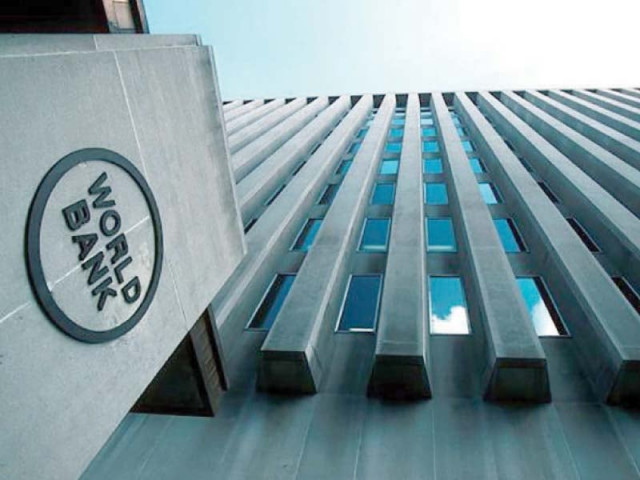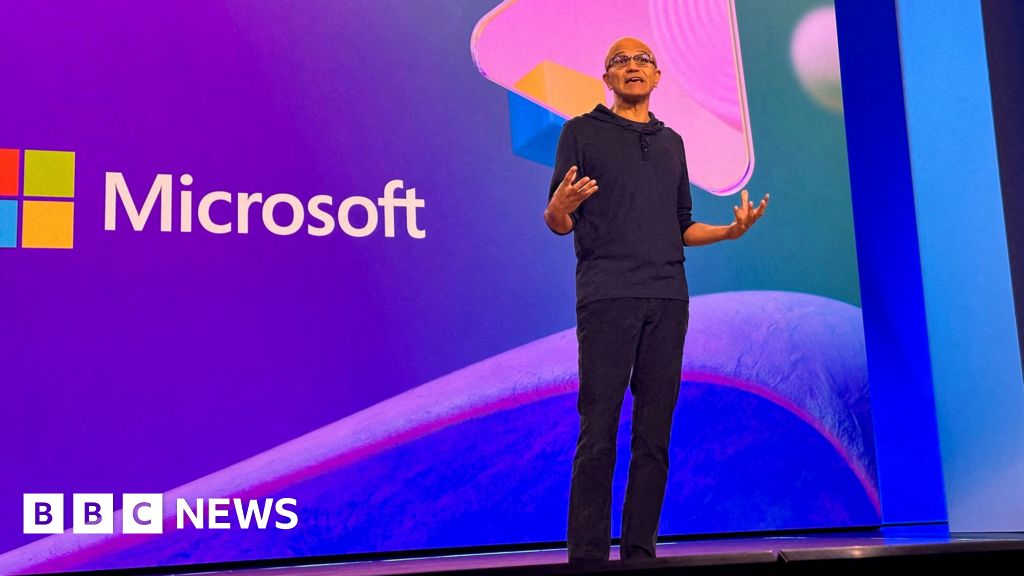Business
Poverty down, but no lift in living standards: WB | The Express Tribune

Lender bases assessment on simulation data; Floods in Punjab deepen rural household losses
World Bank. PHOTO: FILE
ISLAMABAD:
The World Bank claimed on Tuesday that Pakistan’s poverty rate decreased to 22.2% and it would sink further to pre-Covid levels this year, yet reiterating that the country’s current economic growth rate was not enough to reduce poverty and improve the living standard.
The paradoxical statements by the lender underscore the emergent need for the latest credible data, as the World Bank too has assumed the poverty reduction by running a simulation exercise on 2019 consumption data of Pakistan.
The Washington-based lender released its flagship annual ‘Pakistan Development Update’ report, which showed a declining trend in poverty, marking a departure from it’s a month-old statement that the current economic model cannot reduce poverty.
The World Bank on Tuesday also upward adjusted Pakistan’s economic growth forecast to 3% for this fiscal year, which is slightly better than its few days old forecast of 2.7%.
While projecting the poverty rate already declined to 22.2% and to reduce further to 21.5% in this fiscal year, the World Bank economist, Mukhtarul Hasan, also said that the current economic growth rate was “not enough” to improve the living standard and reduce poverty.
Responding to a question by The Express Tribune, Christina Wieser, the bank’s lead poverty expert, refuted that there was any pressure by the government to change the last month’s forecast of poverty going northbound.
Last month, the World Bank had said that “Pakistan’s growth model that supported initial poverty reduction has proven insufficient to sustain progress and poverty is on the rise since 2021-22”.
Wieser clarified that in the absence of the latest consumption data, the World Bank has used some strong assumptions in simulation models, which showed poverty declining. She disclosed that the World Bank had assumed that the increase in sectoral growth is also fully passed on to labour wages.
But this assumption that may not be true as even some government departments are not paying the minimum Rs37,000 per month wage to its daily wage employees and it did not increase the wages in this budget.
Wieser further said that the World Bank will make further adjustments in its poverty estimates once the latest ‘Household Integrated Economic Survey’ data is available in next couple of months.
While presenting the findings here at the World Bank’s local office, Wieser said that higher growth and lower inflation contributed to a decrease in poverty, with the poverty rate, measured at the national poverty line, estimated to have fallen to 22.2% in the last fiscal year from 25.3% of June 2024.
Strong growth in the construction and logistics sectors, which employ around one-quarter of all working poor, boosted labour incomes, said Wieser. However, last month the World Bank said that due to lower wages in the construction sector, the poverty was on the rise in Pakistan.
She said that a sharp drop in food inflation reduced price pressures and improved the purchasing power of the poor, who spend roughly 45% of their household budgets on food. But the report underlined that the floods are anticipated to affect poor and vulnerable rural households, who face the loss of agricultural assets, with limited savings and inadequate coping mechanisms.
These vulnerabilities are compounded by rising food inflation and the volatility of informal jobs in low skill industry and services sectors, according to the report. “As a result, the pace of poverty reduction is expected to slow, with poverty declining only modestly to 21.5% in fiscal year 2026 and to 20.6% in fiscal year 2027.
The report also explicitly stated that since 2019, Pakistan has undergone several major crises, including the Covid-19 pandemic, devastating floods in 2022, and a macroeconomic crisis made more precarious by increased political uncertainty.
It is expected that these shocks had a profound impact on household welfare and poverty rates in the country, but recent survey data is not available to quantify these. In this context, welfare levels for Pakistan can be estimated using a micro-simulation tool which models the path of household welfare based on macroeconomic indicators.
The report added that the underlying assumption for this approach is that macroeconomic indicators, such as sectoral GDP growth, inflation, and changes in the real value of private and public transfers, directly influence households’ real labour and non-labour incomes, which in turn has a direct bearing on consumption levels and poverty.
Bolormaa Amgaabazar, the World Bank’s country head, said that recent floods, have complicated the outlook, imposing significant human costs and economic losses, thereby dampening growth prospects, and posing additional challenges to macroeconomic stability amid constrained fiscal space, high external financing needs, and major regional and global uncertainties.
Budget is vulnerable
The report reflected that meeting the budget targets of economic growth, provincial cash surpluses and budget deficit would not be possible. The budget continues to be predicated on optimistic growth targets and revenues, according to the report. It added that the budget estimates real GDP growth of 4.2% is significantly above World Bank and IMF forecasts.
Increases in provincial surpluses carry risks due to floods, said the lender, adding that the federal budget projects a 45.1% increase in provincial surpluses, a key component of Pakistan’s fiscal consolidation strategy.
This increase hinges on the successful implementation of provincial Agriculture Income Tax (AIT) regimes, effective since January 1, 2025, with tax liabilities for the second half of FY25 expected to be collected in the first quarter of FY26.
Provinces are also expected to strengthen GST collection of services. However, these targets carry significant risks. Provinces will need to curb expenditure growth to maintain surpluses, a task that may prove difficult if revenue performance falls short, said the lender.
The recent floods, particularly in Punjab, threaten agricultural output. Mukhtarul Hasan said that based on the assumption that the flood impacts are limited, fiscal discipline is maintained, and the IMFEFF programme stays on track, economic growth is expected to remain at 3%. A few days ago, the World Bank had cut the economic growth projection to 2.6%.
Inflation & external sector
The flood-related shock to food supply is expected to push inflation above earlier projections, peaking at 7.2% in the current fiscal year, which is slightly higher than the official target.
The current account is projected to return to a small deficit of 0.3% of GDP in this fiscal year as remittances and lower oil prices offset export losses and higher food imports, according to the lender. It said that as post-flood recovery boosts import demand and remittances normalise, the deficit is expected to widen further in the next fiscal year.
The World Bank has sought more visibility in the movement of exchange rate market. It has recommended enabling a deep and liquid interbank market without SBP intermediation and broader participation from market players, including exporters, importers, and foreign investors.
The lender has demanded publishing detailed data on interbank market transactions, including volumes and participants and phasing out ad hoc interventions so that the exchange rate reflects actual supply and demand.
Anna Twum, the bank’s expert on international trade, said that Pakistan’s exports were hardly equal to 0.1% of the global exports, which in the case of India was over 5%. She cautioned that 70% of Pakistan’s exports were at risk due to new standards being introduced by the European Union (EU).
Budget deficit
The lender said that fiscal consolidation is expected to continue under the ongoing IMF programme. However, flood-related relief and reconstruction needs will add to spending pressures, with the fiscal deficit projected to remain elevated at 5.4% of GDP in FY26, which is above the official target.
The World Bank said that public debt is expected to remain elevated to 76% of the GDP due to modest flood related spending and elevated financing needs. The gross financing needs will nevertheless remain high, reflecting maturing short-term debt, repayments to multilateral and bilateral creditors, and upcoming Eurobond maturities, according to the lender.
Business
Honda Motor to make India global mfg hub for new EV – The Times of India

TOKYO: Japanese carmaker Honda Motor will make India a global manufacturing hub for its upcoming electric, Honda 0 α (alpha), whose prototype was unveiled at the Japan Mobility Show.The car has been developed for the Indian and Japanese markets, apart from other Asian countries. Its India debut will be in fiscal 2026-27. Honda Motor Co president and global CEO Toshihiro Mibe said the launch will further the company’s goal to achieve carbon neutrality and zero traffic collision fatalities worldwide by 2050.Honda 0 α (alpha) will be manufactured at Honda’s plant in Alwar, Rajasthan. Honda also launched other electric prototypes, including a green saloon. Honda India MD and CEO Takashi Nakajima said India is one of the top three markets for the company globally in terms of corporate focus and investments. Speaking on the eve of Honda’s new car launch at the Japan Mobility Show, Nakajima said, “Our top management has decided to focus on India among the three key markets for Honda’s future growth alongside the US and Japan.” Nakajima acknowledged that while Honda’s business scale in India is still low compared to the US or Japan, its future ambitions are substantial.He admitted that expanding the product line-up in India will take several years, but hinted at imminent progress. “India is one of the most promising and exciting markets in the world today. Our two-wheeler business is already very big, and now we aim to pursue strong growth in our four-wheel business by building both brand and volumes.” On ethanol blending, Nakajima said that while the higher ratio of ethanol posed challenges, Honda’s engineers were up to it. (The writer is in Tokyo at the invitation of Honda Motor Co.)
Business
Tech giants are spending big on AI in a bid to dominate the boom

The titans of the technology sector are ramping up their spending on artificial intelligence, as they rush to reap the benefits of an AI boom that has pushed stocks to record highs.
Earnings reports from Meta, Alphabet and Microsoft on Wednesday reaffirmed the colossal amounts of money these firms are shelling out for everything from data centres to chips, even as questions swirl about returns on the investments.
Meta said its capital expenditures for 2025 will be between $70bn (£53bn) to $72bn, up from an earlier estimate of $66bn to $72bn.
Its spending growth in 2026 is poised to be “notably larger” than this year, the company said. Meta is seeking to compete with companies like OpenAI.
On a call with analysts, Meta boss Mark Zuckerberg defended the firm’s investments, saying he saw big opportunities ahead driven by AI, both in terms of new products and for honing its current business selling ads and feeding people content.
“The right thing to do is accelerate this,” he said, adding later: “We are sort of perennially operating the family of apps and ads business in a compute-starved state at this point.”
Google and YouTube owner Alphabet similarly raised its forecast for this year to $91bn to $93bn, up from an earlier outlook of $85bn in the summer, in the latest sign of its increasingly lofty spending goals,
That estimate is nearly double the capital expenditures that the company reported for 2024.
Microsoft’s capital expenditures in the quarter through to 30 September, including on data centres, totalled $34.9bn, the company reported on Wednesday – a larger spending figure than analysts had expected, and up from $24 billion in the previous quarter.
“We continue to increase our investments in AI across both capital and talent to meet the massive opportunity ahead,” Satya Nadella, Microsoft’s chief executive, said.
Azure, the firm’s cloud computing unit, and Microsoft’s other AI products have a “real-world impact”, Mr Nadella said.
Exuberance among investors about massive AI spending has helped all three tech firms outperform the broader S&P 500 index.
But Wall Street is also focused on whether these firms’ investments are starting to yield tangible returns.
The two things holding up the US economy in the last several months have been consumers and AI-related business investments, said Aditya Bhave, senior US economist at Bank of America.
“To the extent that the latter remains strong, it’s a bullish signal for GDP growth,” he said.
Business
FDA to speed up approvals of generic biologic medicines as Trump targets high drug costs

U.S. Food and Drug Administration Commissioner Marty Makary speaks during a press conference alongside U.S. Secretary of Health and Human Services Robert F. Kennedy Jr., and Centers for Medicare & Medicaid Services Administrator Mehmet Oz, discussing administration plans to lower drug costs, at the Department of Health and Human Services in Washington, D.C., U.S., Oct. 29, 2025.
Annabelle Gordon | Reuters
The Food and Drug Administration on Wednesday said it will take steps to speed up the process of developing generic versions of complex biological drugs, in a bid to increase cheaper competition for expensive medicines and lower drug costs for Americans.
It’s the Trump administration’s latest move to rein in high prescription drug costs in the U.S., where medication prices are two-to-three times higher than those in other developed nations.
The move to support the development and approval of so-called biosimilars could be a blow to pharmaceutical companies, whose most profitable products are often biological products that treat serious and chronic diseases. The exact impact will depend on the drugmaker and its products.
In a statement on Wednesday, a Health and Human Services Department spokesperson said the law gives manufacturers 12 years of exclusivity for biologic medicines, which is a “primary determining factor in drug development decision-making.”
“No manufacturer should anticipate a monopoly or anything else beyond what is legally granted,” the spokesperson said.
The FDA’s new reforms “will take the five-to-eight year timeframe to bring a biosimilar to market and cut it in half,” the agency’s Commissioner Marty Makary said during a press conference on Wednesday.
During the event, HHS Secretary Robert F. Kennedy Jr. said the FDA has an “outdated and burdensome approval process that has slowed down the entry of biosimilars.” He said “even when [the drugs] do get approved, current laws often prevent pharmacists or patients from substituting them for patients who would benefit from a more affordable option.”
“That all ends today, a the FDA is taking bold, decisive action to break down these barriers and open the markets for real competition,” Kennedy said.
Biological products are engineered with living cells, which makes manufacturing more complex than for chemically derived drugs. Biologics have a special pathway to FDA approval, and it is harder for generic drug manufacturers to sell cheaper versions due to the high costs of development and difficult regulatory landscape.
Biologic medications make up only 5% of prescriptions in the U.S., but account for 51% of total drug spending as of 2024, according to an FDA release. FDA-approved biosimilars are as safe and effective as their branded counterparts, yet their market share remains below 20%, the agency added. The FDA said it has so far approved 76 biosimilars, making up only a small fraction of approved biologic drugs.
Kennedy said biosimilars, on average, cost half the price of their branded counterparts. Their entry into the market drives down brand-name drug prices by another 25%, which is a “real relief for patients,” he added.
Biosimilar generics saved $20 billion in U.S. health-care costs last year alone, the FDA said.
In a new draft guidance, the FDA proposed major updates to simplify biosimilar studies. For example, the agency recommended that human studies directly comparing the biosimilar to a branded product may not be necessary for drug companies to conduct. That research takes years and costs tens of millions of dollars.
Biosimilars have historically struggled to gain market share from their branded counterparts compared to generic copies of small-molecule drugs, which are often delivered in pill form and can enter cells easily because it has a low molecular weight.
The difference is that many biosimilars aren’t identical copies of branded biologic drugs, while generics are.
In many cases, pharmacists can’t directly substitute a branded biologic for a biosimilar when filling a prescription unless they are classified as “interchangeable” and it is permitted by state law.
But the FDA on Wednesday said it generally recommends against requiring so-called “switching studies,” which determine whether biosimilars have that classification. That step is not required for generic copies of small-molecule drugs.
“These additional studies can slow development and create public confusion about biosimilar safety,” the FDA said in a release.
-

 Fashion1 week ago
Fashion1 week agoChinese woman charged over gold theft at Paris Natural History Museum
-

 Entertainment1 week ago
Entertainment1 week agoJohn Grisham unveils his first-ever mystery, “The Widow”
-

 Tech1 week ago
Tech1 week agoThis Smart Warming Mug Is Marked Down by $60
-

 Tech1 week ago
Tech1 week agoEaster Island’s Moai Statues May Have Walked to Where They Now Stand
-

 Fashion1 week ago
Fashion1 week agoThe North Face and Cecilie Bahnsen launch second collaboration
-

 Politics5 days ago
Politics5 days agoTrump slams ‘dirty’ Canada despite withdrawal of Reagan ad
-
Sports1 week ago
These five NBA players could be ready for an all-star breakthrough
-

 Fashion1 week ago
Fashion1 week agoNew EU strategy proposed to shape global clean, resilient transition














